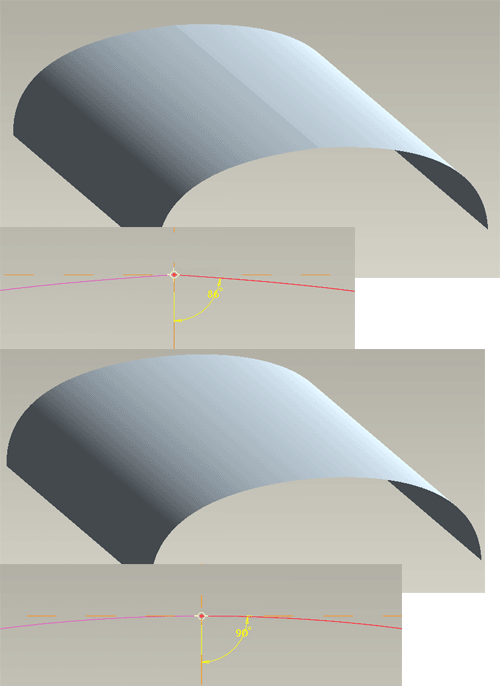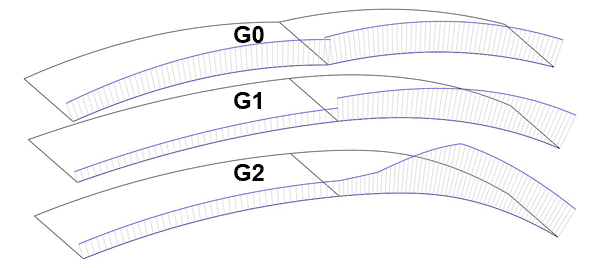Reference geometry
Variable Section Sweep
Layers & visibility
Adv. Rounds
Mathematical control
Advanced Patterns
Draft & Split plane Trim
Geometry from 2D graphics
Model analysis
Accuracy
Skeleton based surfacing:
Model Analysis
Section Curvature
Splines
Boundary Blend
Construction and manipulation
Trim, Merge & Solidify
3sided surfaces
Offset Surfaces
Skeleton based surfacing : Fundamentals
Definitions
Surface - is an area boundered by edges which is non solid feature with no
thickness
Surface Patch - an individual boundered area with no other edges intersecting it
Surface Quilt - a number of patches joined together
Curvature - with respect to a spline curve or surface with a constantly changing
radius. At any point on the curve/surface its curvature is 1 divided by the radius
at that point. Therefore, a nearly flat area of a
surface/curve [very large radius] has a very small curvature.
Surface Display
The one-sided outer edges of a surface feature are
displayed in cerise [pink].
The two-sided inner edges are displayed in magenta [purple].
Therefore a quilt will be displayed as a number of magenta lines inside a cerise
boundary.
Surface Continuities
Make sure you know what a spline curve is [HERE] and what curvature is [HERE]
Continuity between surface patches is important for both aesthetic and functional reasons. Poor continuity can show creases and show each individual patch's boundaries. Continuity between curves and surfaces can be expressed as geometric (G0, G1, G2) continuity.
Click image to enlarge
G0 Continuity: Positional continuity. Two curves that share an endpoint, two surfaces that share a boundary are G0 continuous.
G1 Continuity: Tangential continuity. Two curves that share an endpoint, two surfaces that share a boundary are G1 continuous when the normals at the join/boundary are exactly aligned in direction - at that point they are travelling in the same direction.
G2 Continuity: Curvature continuity. Two curves that share an endpoint, two surfaces that share a boundary are G2 continuous when they have the same curvature values where they meet.

Midplane/Symmetry Continuity
If your model is symmetrical then it will generally be quicker and more robust to model half of it and then mirror the whole model - at least to the point where it becomes asymmetrical.
To achieve continuity across the midplane:
All curves and resultant surfaces must be normal to the midplane.

Surface Classification
Surfaces within a model are often classified according to their aesthetic importance in the final product.
The fundamental outer surfaces which are most prominent in a product are often classed as the A surfaces - those which need most aesthetic consideration, ie. the top surfaces of the mouse in your hand.
The surfaces which are generally hidden but may still be seen by the user, ie. the bottom of the mouse, are classed as the B surfaces.
The C surfaces are then the internal, always hidden surfaces which need no
aesthetic consideration.

